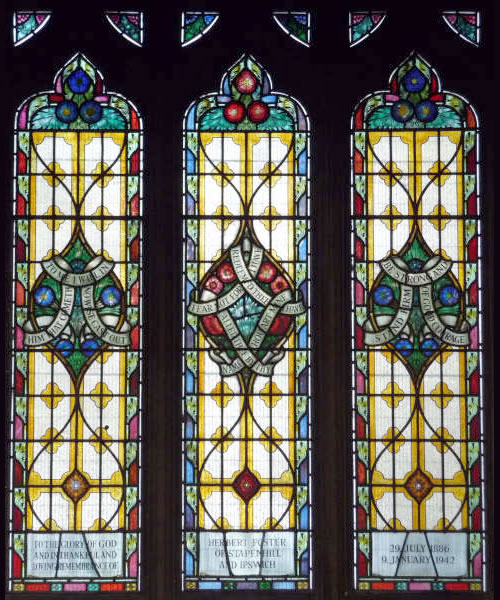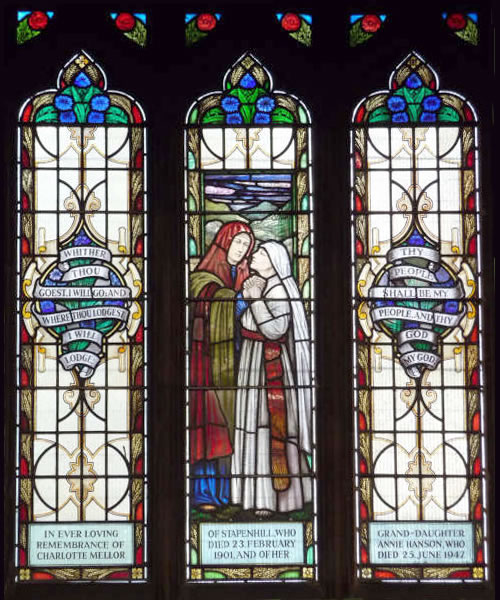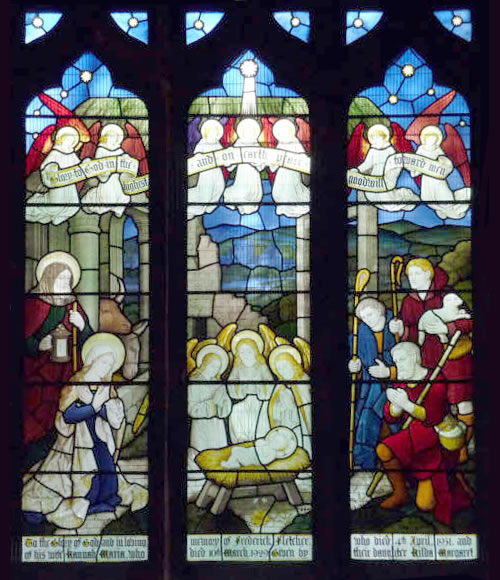Stained Windows
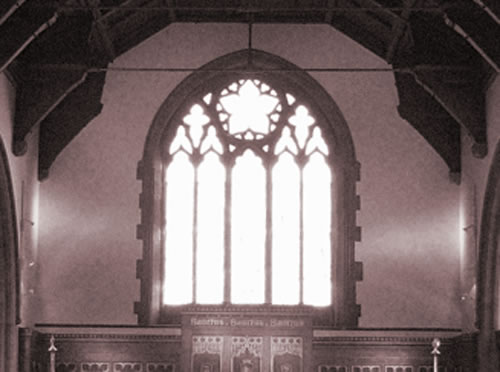
A photograph taken in 1900 shows a plain east window behind the alter. When an elderly Miss Eleanor Meynell attended the church, she is reputed to have remarked as much to her father, Canon Francis Meynell. Francis as a result became involved in the installation of the existing, much more impressive, stained glass window within the next few years, before the First World War.
It has many layers of symbolism. The main theme is a great early hymn sometimes called ‘A Creed in the form of the Adoration’ – Te Deum Laudamas.
It was very nicely deciphered in an article in the Saint Peter’s Parish Magazine in 1992 by Ray Earp.
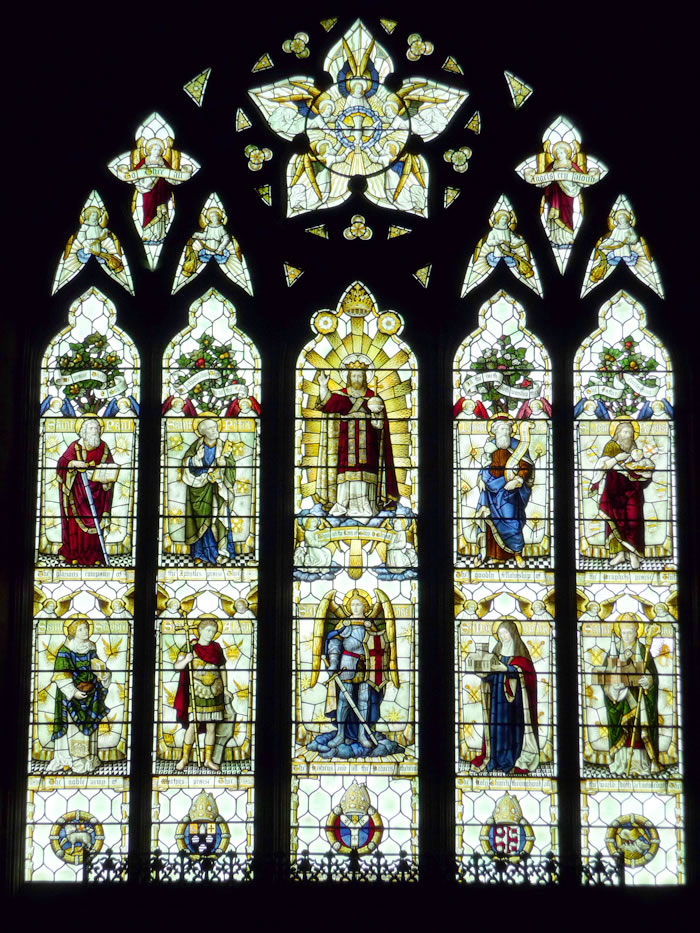
At the top is the blue of the firmament with its heavenly bodies. The cinquefoil (five leaved plant) element in the centre depicts the Spirit in the form of the Heavenly Dove bringing down the Host and guarded by five angels. On either side are representations of the Archangels supported by Cherubim and Seraphim with musical instruments.
In the position of ascendancy, in the main body of the window, is the figure of Christ as Priest and King – Christus Pantocrator – Christ all powerful. He wears priestly robes of crimson and gives the blessing with two fingers folded, as was the custom in the early church. In his left hand he holds the whole world surmounted by the Cross as his orb. Round his head there are three shafts of light representing the Trinity, together with the crown of the Godhead. Notice that, unlike an earthly King, he has no sword of state or sceptre.
Below Him stands a guardian angel wearing the ‘whole armour’ with the ‘Sword of the Spirit’. His shield bears the emblem of St. George.
The remaining eight figures are paired.
Top left are the Apostles; St. Paul with his book and St. Peter with his key, a reminder that when Modwen returned from Rome to found her church at the foot of Mount Calvus (later to become Scalpcliffe Hill), she dedicated it to the glory of God and in honour of St. Peter & St. Paul – and part of this dedication we retain today.
Top right are the Prophets, Isaiah from the Old Testament and John the Baptist from the New Testament.
Below the Apostles comes the martyrs. Lower left are Saint Stephen, the first Christian martyr and Saint Alban, the first British martyr.
Lower right represents the ‘Holy Catholic’ church throughout all the world’, in the form of Saint Modwen, holding a model of the church she founded here, together with Saint Chad, the first Saxon Bishop of Mercia who established himself at Lichfield, even before the kings of the day had settled residences.
At the foot of the window are three bishops mitres and arms which trace the history of our parish. In the centre we see Canterbury, in which province we are flanked, by Lichfield to the right and Southwell to the left since the window was completed before Derby Diocese was separated from Southwell.
To complete the window are two roundels with Christian symbolism. These are the triumphant Pascal Lamb and the Pelican in her Piety who plucked her breast to draw blood on which to feed her young, and so represents the demands made upon the church.
Other Stained Windows that can be enjoyed within Saint Peter’s Church…
